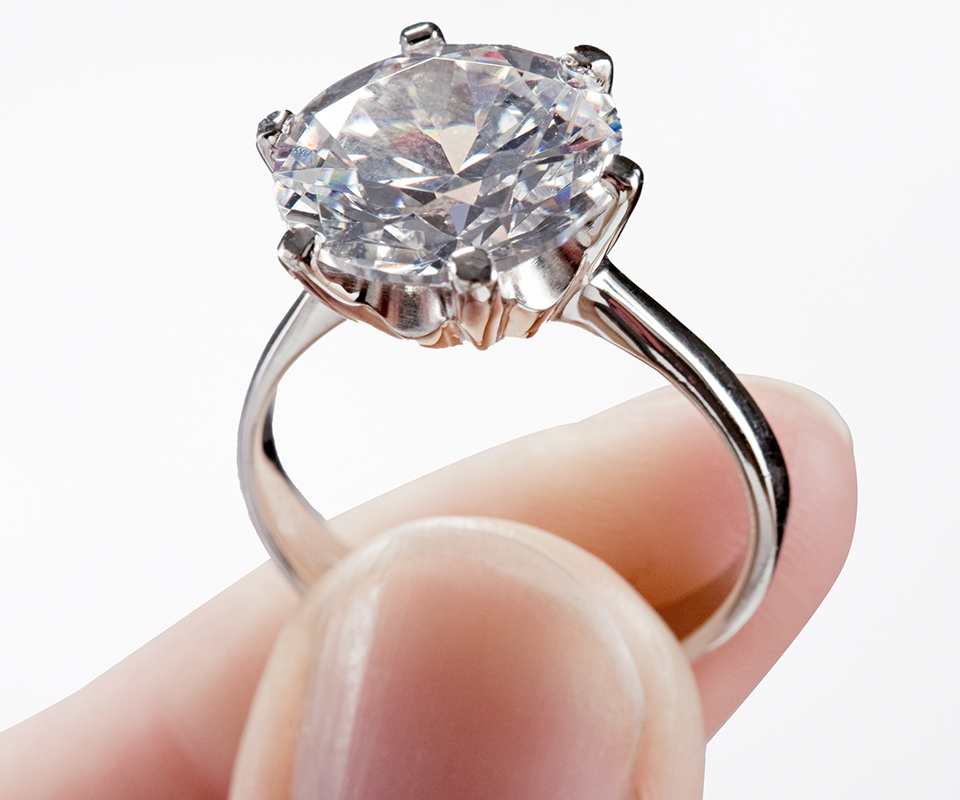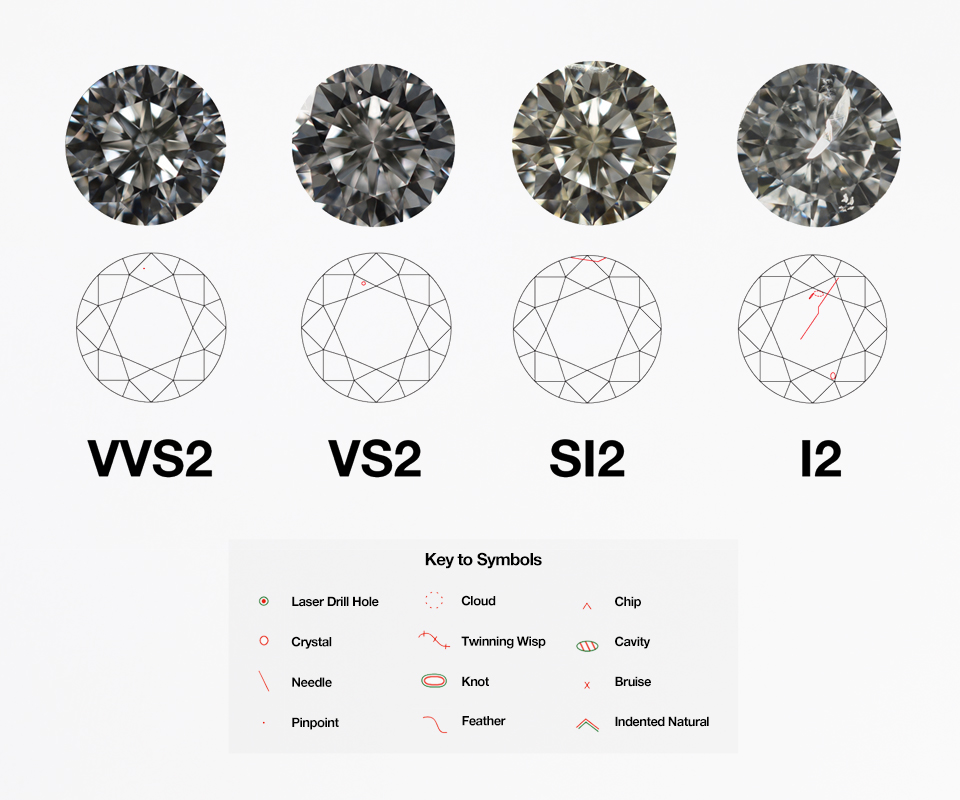Clarity is the key to quality.
Clarity is the key to quality.
Diamond Clarity.
Every diamond is unique. Formed by extreme heat and pressure deep within the earth, it isn’t uncommon for diamonds to contain birthmarks. These clarity characteristics are created when small crystals are trapped in the diamond. As they grow, pressure and stress can cause inclusions and blemishes – sometimes only visible under a microscope.
The clarity of a diamond is based on the size, location, visibility and number of inclusions or blemishes.
Internal and surface reaching characteristics are called inclusions.
External features are called blemishes.
Precise clarity grading is the secret to accurately evaluating a diamond. It is essential when buying a diamond to secure an accurate assessment.


Innovation in instrumentation.
Many blemishes and inclusions are not visible to the naked eye. Evaluating with gemological accuracy generally requires a microscope, another GIA contribution to the industry. GIA’s standard is that clarity, polish, and symmetry grading can only be finalized using a 10x loupe.
Innovation in instrumentation.
Many blemishes and inclusions are not visible to the naked eye. Evaluating with gemological accuracy generally requires a microscope, another GIA contribution to the industry. GIA’s standard is that clarity, polish, and symmetry grading can only be finalized using a 10x loupe.

Clarity is only as clear as the scale we use to define it.
Grading clarity should be left to a skilled grader. Defining precise categories and issuing a standard system for clearly defined ratings, the GIA Clarity Scale consists of categories ranging from Flawless to Included, and it contains 11 specific grades.

The GIA International Diamond Grading System™
The GIA Diamond Clarity Scale is the global language for diamond clarity grading. Wherever you go in the world, whatever language is spoken, when buying a diamond, today you will likely hear terms like VVS1 or SI2 used to describe clarity.
Every diamond is evaluated under 10x magnification and assigned a clarity grade. A flawless diamond would receive an (FL) clarity grade; a diamond with obvious inclusions might receive a clarity grade of I3. Diamond clarity grades are based on the number, size, relief, nature, and location of characteristics. The clarity rating of a diamond is a reflection of the overall appearance of the stone – although many of these characteristics will likely not be visible to the naked eye.
Every diamond is truly unique, however most diamonds you see in jewelry stores fall between VS (very slightly included) and the SI (slightly included) on the clarity grading scale.
1 Universal System. 11 Grades.
All under 10x magnification
Flawless (FL) – No inclusions and no blemishes visible.
Internally Flawless (IF) – No inclusions visible but does have blemishes.
Very, Very Slightly Included (VVS1 and VVS2) – Inclusions so slight they are difficult for a skilled grader.
Very Slightly Included (VS1 and VS2) – Inclusions are observed with effort but can be characterized as minor.
Slightly Included (SI1 and SI2) – Inclusions are noticeable.
Included (I1, I2, and I3) – Inclusions are obvious which may affect transparency, brilliance and durability.


Expertise at your fingertips.
You don’t need to be a gemologist to purchase a diamond with confidence. You just need to know where to find one.
GIA is the trusted benchmark for diamond grading. Download the GIA App now to learn more about the 4Cs and look up GIA reports.
Expertise at your
fingertips.
You don’t need to be a gemologist to purchase a diamond with confidence. You just need to know where to find one.
GIA is the trusted benchmark for diamond grading. Download the GIA App now to learn more about the 4Cs and look up GIA reports.
GIA Report Check
Access your GIA Grading Report results using your GIA report number.